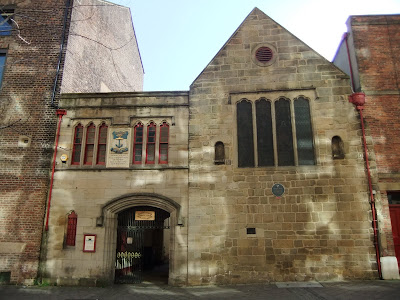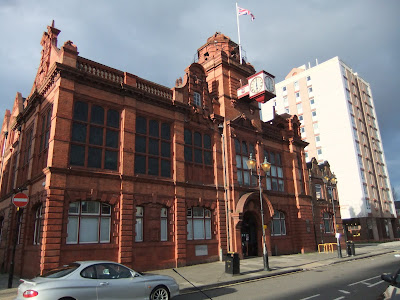This statue of Lord Armstrong stands on the North side of the City just outside the Hancock Museum on the junction of the Great North Road and Claremont Road.
Lord William Armstrong was a great industrialist of 19th century Tyneside
He was born in Newcastle upon Tyne, at 9 Pleasant Row, Shieldfield, about three-quarters of a mile from the city centre. The house no longer exists but an inscribed granite tablet marks the spot. At that time the area, next to the Pandon Dene, was quite rural. His father, also called William, was a corn merchant on the Newcastle quayside, who became mayor of Newcastle in 1850. An older sister, Anne, born in 1802, was named after his mother, the daughter of William Porter.
In 1864 the two companies, W.G. Armstrong & Company and Elswick Ordnance Company merged to form Sir W.G. Armstrong & Company. Armstrong had resigned from his employment with the War Office, so there was no longer a conflict of interest. The company turned its attention to naval guns. In 1867 Armstrong reached an agreement with
Charles Mitchell, a shipbuilder in Low Walker, whereby Mitchells would build warships and Elswick would provide the guns. The first ship, in 1868 was
HMS Staunch, a gunboat.
[3]In 1876, because the 18th century bridge at Newcastle restricted access by ships to the Elswick works, Armstrong’s company paid for a new
Swing Bridge to be built, so that warships could have their guns fitted at Elswick. In 1882 Armstrong’s company merged with Mitchells to form Sir William Armstrong, Mitchell and Co. Ltd. and in 1884 a shipyard opened at Elswick to specialise in warship production.
From 1863 onwards, although Armstrong remained the head of his company, he became less involved in its day-to-day running. He appointed several very able men to senior positions and they continued his work. When he married, he acquired
Jesmond Dene House, a house to the west of
Jesmond Dene, Newcastle and began to landscape and improve land that he bought within the Dene. In 1860 he paid local architect
John Dobson to design a banqueting hall in the Dene. His house close to Newcastle was convenient when he was a solicitor and an industrialist, but when he had more spare time he longed for a house in the country.
[3]He had often visited
Rothbury as a child, when he was afflicted by a severe cough, and he had fond memories of the area. In 1863 he bought some land in a steep-sided, narrow valley where the Debdon Burn flows towards the
River Coquet near Rothbury. He had the land cleared and supervised the building of a house perched on a ledge of rock, overlooking the burn. He also supervised a programme of planting trees and mosses so as to cover the rocky hillside with vegetation. His new house was called
Cragside, and over the years Armstrong added to the Cragside estate. Eventually the estate was 1,729 acres (7.00 km
2) and had seven million trees planted, together with five artificial lakes and 31 miles (50 km) of carriage drives. The lakes were used to generate hydro-electricity, and the house was the first in the world to be lit by hydro-electricity, using incandescent lamps provided by the inventor
Joseph Swan.
























